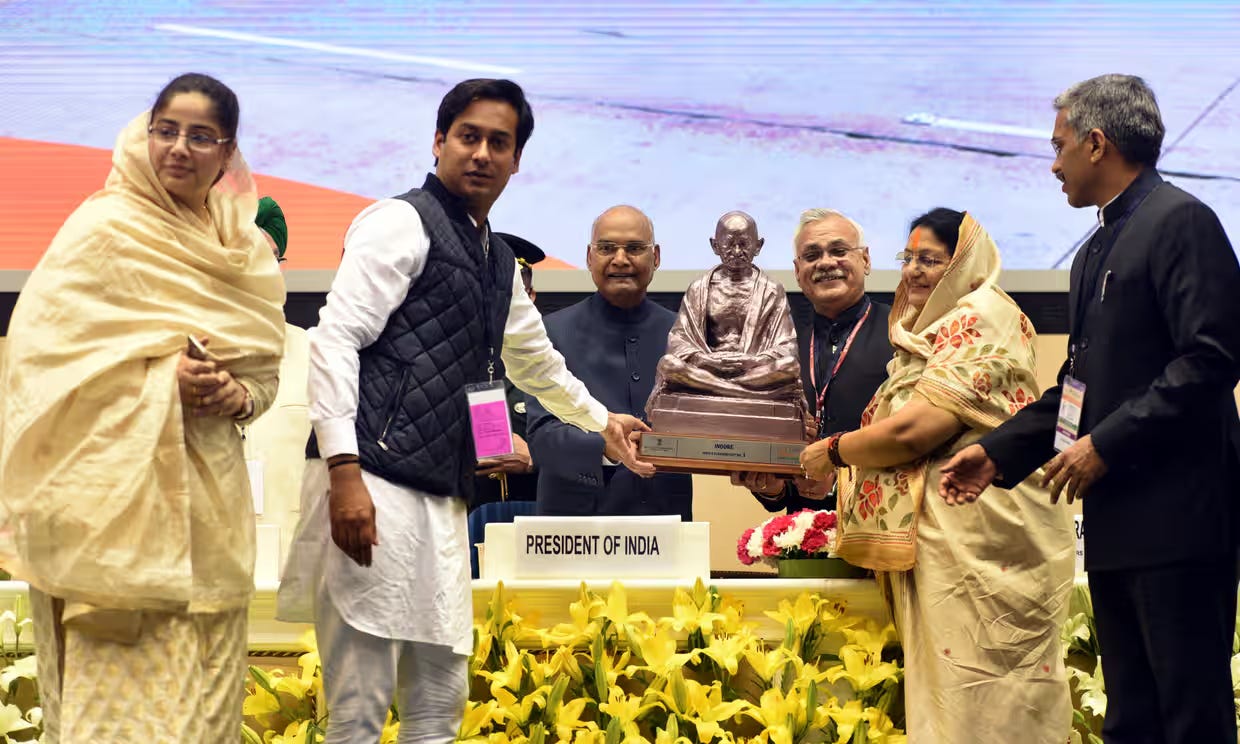🧹 How Indore Became India’s Cleanest City
and a circular economy role model
For 8 years straight, Indore has worn the crown of India’s cleanest city.
Not once.
Not twice.
Eight. Years. In. A. Row.
At first glance, this might seem like a cosmetic achievement. Swept streets. Painted walls. Fewer garbage dumps.
But that’s just the surface.
Behind the spotless facades lies one of the most functional, scalable, and innovative urban waste management models in India today.
This isn’t just about cleanliness.
Indore is quietly showing India how to build circular cities.
Let’s explore how 👇
🛠 The Indore Model: Engineering Cleanliness from the Ground Up
Indore didn’t just introduce a few programs.
It rebuilt its waste management ecosystem from scratch, with discipline, scale, and public participation.
Here’s what sets the city apart:
1. 100% Door-to-Door Collection
Every household in the city — over 4 lakh of them — is covered under a well-orchestrated daily collection system.
Trucks with GPS tracking and dual compartments (for wet and dry waste) pick up waste every single day.
No missed homes. No piles on street corners.
📱 Citizens even use an app to track pickup times and report issues.
2. Decentralized Segregation at Scale
Indore operates over 600 “transfer stations” and decentralized mini-MRFs.
This ensures waste is:
Collected faster
Segregated more efficiently
Sent to the right downstream process — composting, recycling, or energy recovery
These centers are staffed, monitored, and fully functional.
3. High Material Recovery Rates
Indore diverts nearly 70% of its waste away from landfills.
How?
Composting almost all of its organic waste
Recycling over 6,000 tons of plastic into roads, tiles, and construction materials
Sending reject waste to co-processing units (like cement kilns)
This makes it a rare Indian city to actually practice the “reduce-reuse-recycle” loop.
4. Waste-to-Wealth in Action
Indore doesn’t just manage waste.
It generates revenue from it.
In 2023 alone:
₹100+ crores were generated through compost sales, recyclables, and carbon credits
The city’s biogas plant powers buses
Plastic waste became road material and construction blocks
This isn’t just sustainability. It’s circular entrepreneurship at a municipal scale.
5. People-First Governance
Indore didn’t achieve this with just tech or infrastructure.
It happened because the people were made partners.
From “Swachhata Doots” (cleanliness ambassadors) to local NGOs and school students, citizens have been consistently engaged in:
Street plays
Contests and awareness drives
Swachhata rankings by ward
There’s pride in being clean. That emotional connect matters.
💡 What Other Cities Can Learn
Let’s face it: most cities in India are still struggling with:
Poor segregation
Open dumping
Underfunded sanitation teams
Tokenistic EPR implementation
Indore shows us that this can be fixed — with the right mindset and model.
🧠 Final Thoughts
Indore is not perfect. But it is persistent.
And in a country battling with over 62 million tons of annual waste, it stands tall as a model of what’s possible.
The next phase?
Scaling this across 100 cities.
Investing in infra.
Building citizen trust.
And enabling private partnerships.
Because this isn’t just about cleaning up.
It’s about rethinking how cities work — from linear to circular.
🔍 P.S. What I’m Exploring Next:
In the next issue, I’ll break down:
How Mangaluru is leveraging automation in sanitation
India's new EPR Draft (2.0) and why brands should pay attention
Visual deep dives into India’s waste economy (infographics + data)
If you're building in sustainability, circular economy, or urban innovation — stay tuned.
—
📬 If you found this valuable, hit that Subscribe button.
Or better — forward this to someone who needs to rethink how their city handles waste.
Let’s clean up the future, one model city at a time. 🌱




